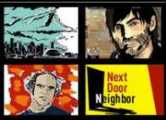Okay, I’ll admit it: I was more than a little skeptical about the power of blogs and bloggers to change the world. I’ll even confess to laughing openly about Instapundit Glenn Reynolds’ new book and its hyper-inflated title, An Army of Davids : How Markets and Technology Empower Ordinary People to Beat Big Media, Big Government, and Other Goliaths.
But in the past couple weeks, I’ve begun to believe. (Sorry for the hackneyed Morpheus paraphrase — I just couldn’t resist.)
Even following MySpace news as much as I do, I was still surprised to learn that the recent massive student protests against new immigration laws were organized, at least in part, on that site.
From the Los Angeles Times:
For the small group of students who instigated the walkouts, most of whom hadn’t been politically active but were well-connected on campus and online, it was a transformative week.
Using modern technology — mostly their communal pages on the enormously popular MySpace website — they pulled off an event with surprising speed and dexterity. Planned in mere hours on little sleep, lacking any formal organization, the protests were chaotic and decentralized and organic.
We sometimes focus solely on the social networking aspect of the social networking sites — unsurprising, that — but forget that social networking can be more than just meeting new friends and finding cute singles; it can be a tool to organize like-minded people towards a cause, and young savvy activists like these are waking up to that possibility.
Then there’s Ben Domenech.
(more…)







